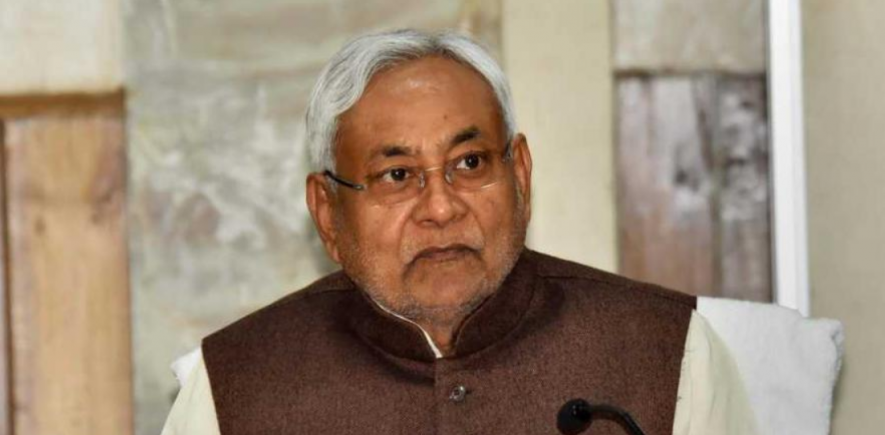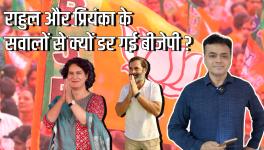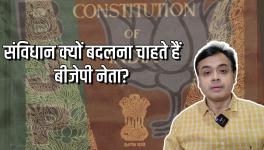Is Nitish Kumar Equipped to Coordinate Opposition Unity?

Image Courtesy: PTI
Though communal forces have brought Bihar to the boil by misusing Ram Navami processions, it has not changed the shift in approach of its parties towards the idea of Opposition unity. This change in attitude has been noticeable in a host of parties ever since Rahul Gandhi’s disqualification from Lok Sabha last month. It includes the Trinamool Congress, the Aam Aadmi Party and the Bharat Rashtra Samithi joining the tirade against the disqualification.
Since then, the media attention was on Bihar Chief Minister Nitish Kumar, asking him why he was silent on the issue. He has responded: “I am just waiting for Congress’s response, I wish for all Opposition parties to unite to fight the 2024 polls robustly”. He made it clear he had met top Congress leaders twice and briefed them about his wish to unite all the non-BJP parties. “My party [Janata Dal-United] leaders are already participating in the meetings [called by Congress president Mallikarjun Kharge] in Delhi. They briefed me about it,” he told reporters in Patna last Wednesday.
Even the AAP never showed signs of conciliation with Congress until the Lok Sabha stripped Rahul Gandhi of his membership in the wake of a Surat court convicting him for two years in a defamation case. “It’s not the battle of Rahul Gandhi alone. Everyone has to fight for restoring the democracy that is in peril with Narendra Modi as the Prime Minister,” Delhi Chief Minister and AAP convenor Arvind Kejriwal said.
In West Bengal, the Trinamool Congress (TMC) is locked on Bengal’s turf against the Congress-Left combine, and recently lost a by-poll to the Congress. But Mamata Banerjee’s party, closing ranks with the grand old party, attended the meeting Kharge called to fight the BJP for “misusing the constitutional institutions to throttle democracy and patronising corruption and crony capitalism”.
Congress spokesman Jairam Ramesh said, “As many as 19 parties attended the meeting. We will work together to defeat the BJP killing democracy.” Telangana Chief Minister K Chandrashekar Rao’s BRS also joined Kharge’s meeting and committed itself against the BJP—“What is the Bihar Chief Minister waiting for when the parties that opposed the Congress are now joining it to ask questions about the PM’s relationship with Adani and the misuse of central investigating agencies against his political opponents?”
Replying to this query, Bihar’s senior-most socialist leader and Rashtriya Janata Dal’s national vice president, Shivanand Tiwari, said, “The Congress has to go beyond congregating parties. It has to provide political space to the Samajwadi Party (Uttar Pradesh), TMC, AAP and BRS, and others.” He elaborated, “The Congress should cede ample space to regional parties which are capable of fighting the BJP on their strength in their respective states. It should focus on the states in which it had a direct contest with the BJP.”
Real Bottleneck:
The senior socialist leader pointed out that the real bottleneck getting in the way of parties like Samajwadi Party, AAP, TMC, and BRS doing business with the Congress on their turfs. For instance, in Bengal, the TMC shares the social constituency with the Congress. It is likely to suffer an existential crisis if it works with the Congress. Moreover, it has a long history of animosity with the Left, having acquired power by defeating them.
In Uttar Pradesh, Akhilesh Yadav’s Samajwadi Party is the strongest non-BJP party. The most populous state has the minorities constituting 20% of the electorate, besides the Yadavs and other backward classes as its base. It is, apparently, wary that it might lose its core constituency to the Congress in the event of allying with it. The AAP and BRS face similar conundrums in their areas of influence.
Most non-BJP parties share broad ideological similarities with the Congress party concerning India’s constitutional ethos, social justice, and secularism. They oppose the aggressive Hindutva espoused by the BJP under the stewardship of Modi. Still, at one stage or the other they have allied with the BJP in the war over turf with the Congress in their regions of influence.
Nitish Model:
Among regional satraps, Nitish Kumar is best equipped to coordinate with the Congress vis-a-vis the regional parties in the given situation for three broad reasons. First, he has set an example of working together with as many as seven parties, including the Congress, in the Mahagathbandhan or Grand Alliance he heads. The Grand Alliance is a microcosm of the vision he has been insisting takes shape at the national level to take on the BJP in the 2024 Lok Sabha election. In its fold are the RJD—the largest single party of Bihar—besides his JD(U), the CPI(ML)-Liberation, the CPI, the CPI(M), and the Hindustani Awam Morcha-Secular or HAM-S of Dalit leader and former chief minister, Jitan Ram Manjhi.
Lalu Prasad Yadav’s RJD already had the Left parties and the Congress in the Grand Alliance. It became broader when Nitish joined it, bringing with him his JD(U) and HAM-S. Now, the Mahagathbandhan with seven parties enjoying their respective clouts in the maze of castes and classes in Bihar, is almost unbeatable against the BJP, which banks primarily on elite castes voters.
Secondly, the Nitish government works on the ‘growth with justice’ formula synonymous with inclusivity in Bihar’s context. Reservation to the extremely backward classes (EBCs), OBCs, and Mahadalit category, which now includes all Dalit castes of Bihar, in the Panchayat system, has created space for all sections to participate in governance. Besides, 33% reservation to women in jobs, education, and local bodies, has carved a constituency of female voters. Even his detractors admit he has ensured better roads and electricity in homes, and expanded educational and health facilities.
Since the JD(U) joined the Mahagathbandhan in August 2022, the Bihar government has been on a job-creation spree. Deputy Chief Minister Tejashwi Yadav—in the Opposition until then—promised 10 lakh jobs during the 2020 Assembly election campaign and the government is implementing the promise. RJD spokesman and Member of Parliament Manoj Jha said the government had provided close to 1.5 lakh jobs in six months and is on way to fulfilling its promise. Greater employment opportunities set a fantastic example when the regime at the Centre is widely known to have failed on this front.
Most importantly, Nitish Kumar has experience of working with the BJP and enjoys a strong personal rapport with Akhilesh Yadav, K Chandrashekar Rao, Arvind Kejriwal, Mamata Banerjee, Sharad Pawar, and Left party leaders. “He is equipped to carry out intricate political negotiations, given his background and dexterity. He can talk to Sharad Pawar, Farooq Abdullah, Sonia Gandhi, Rahul Gandhi, and other senior leaders to work out a viable arrangement to dislodge the BJP in 2024,” Tiwary said. And many observers of the Hindi heartland concur with him.
The author is a senior journalist, media educator, and independent researcher in social anthropology. The views are personal.
Get the latest reports & analysis with people's perspective on Protests, movements & deep analytical videos, discussions of the current affairs in your Telegram app. Subscribe to NewsClick's Telegram channel & get Real-Time updates on stories, as they get published on our website.























